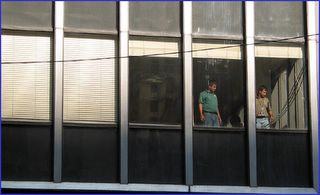 by Anonymous
by AnonymousThe sun was rising over 50th Street. Its rays reflecting red and orange light against the glass-plated towers and gray streets that were slowly coming back to life - the cabs and busses passing up 6th Avenue with greater and greater frequency and the vendors, in tiny enclosed carts, furtively brewing coffee and buttering bagels to prepare for the imminent morning rush.
K sat in his windowless office on the 37th floor of the Time-Warner building, totally oblivious to what was happening in the world below. To him, it was a too-familiar scene. For three years, he had pulled countless all-nighters as the Master Geek - the King Fixer for Pathfinder - Time-Warner's flagship Internet portal.
It had been an interesting ride. He had worked for the largest media company in the world, guiding the paths of brands like People Magazine and TIME into the new and exciting world of the Web. The downside was that he had had to give up his life in the process. Projects needed to be done on time and done perfectly, even if hitting the deadline meant going without sleep for days on end to make sure that every HTML link and line of JavaScript was checked and re-checked by hand.
To his credit, K was the last person afraid of hard work. In fact he enjoyed it. What pissed him off more than anything, though, was the oppressive heat in his office. In deference to Time-Warner's bean counters, Building Services had completely ignored his complaints and continued turning off the air conditioning at 6:00 PM every night to save money. The result was a steamy corporate hell which grew hotter by the hour, with the air heavy and hard to breathe and the only respite coming from the cooling fans of the three old P90 Dells under his desk blowing a slight breeze across his ankles.
But it wasn't simply the heat that caused K's pressed trousers and starched Brooks Brothers shirt to lie like damp rags around his hunched body. Something else was eating at him that was stronger than the MSG from the bad Chinese food he'd eaten hours before. It was a feeling of shame that rose up in K's gut, fouling his mood, and casting a deadly pall over the future. What made this particular night different was that K wasn't trying to meet some high-priority deadline. As far as K was concerned, the deadlines could go all go to hell now. His career at Big Brands was over - three years of hard work destroyed because he had dared to speak the truth about where the whole Pathfinder mess was going unless management got its act together.
"Stupid, stupid, stupid", K thought to himself, and began calculating the hours remaining before he, like so many managers at Pathfinder, was tossed out the window to land 37 floors below.
As beads of perspiration dotted his forehead, K's white-knuckled fingers typed in fitful, short, machine gun-like rhythms, keying short character strings into a cryptic little dialog box, over and over.
Username: Editor
Password: User
Username: Editorinchief
Password: Guest
He tried another combination - the simplest one possible. The one that nobody should ever use: the one where your email username is your first name and the password your last name. K felt so stupid typing it: nobody in senior management would be clueless enough to leave their email box so idiotically unprotected.
But then, suddenly, K paused. The hard drive of one of the Dells was cycling below his desk - gently clicking as it cached some files. "Holy Shit," he mouthed. There in front of him, on the greasy 17-inch screen, opening like a rare blue flower, was the e-mail box containing the complete record of correspondences from the manager who K knew was out to get him - the manager who, beyond any of the numerous enemies K had made at Time Inc, had done everything in his power to end K's career.
"Now," K said to himself, "the game begins." And for the first time in months, he felt good - almost as good as he did when he first joined the staff of Time-Warner's mighty Pathfinder project some thirty-six months before.
... to be continued ...
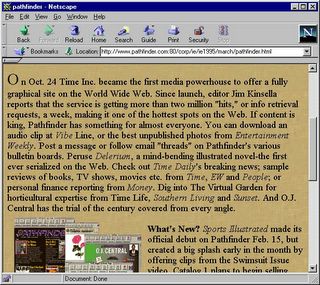
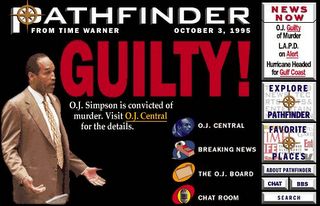
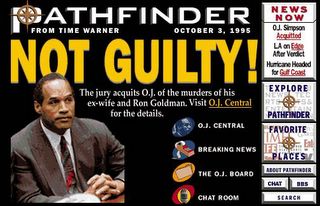
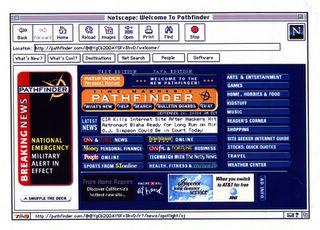
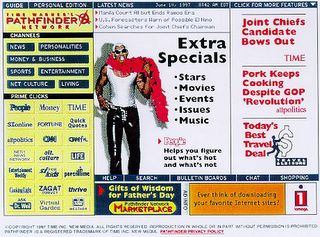
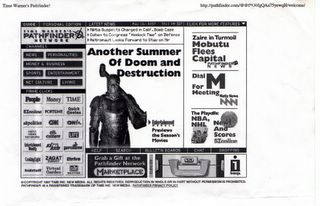
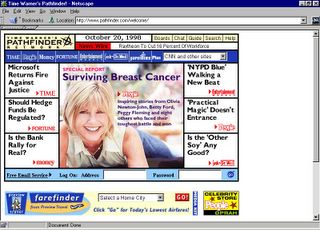
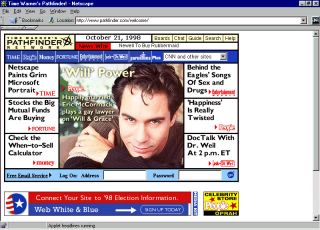
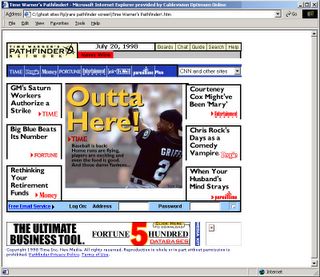




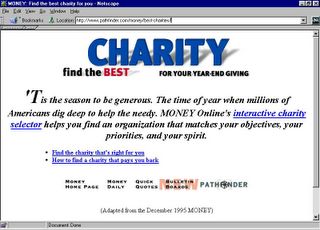
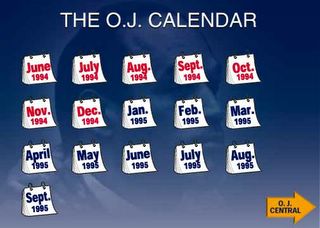
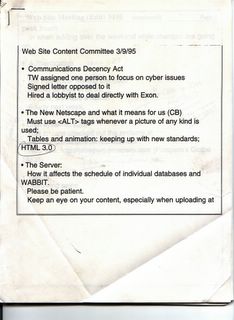
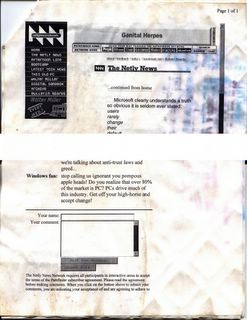
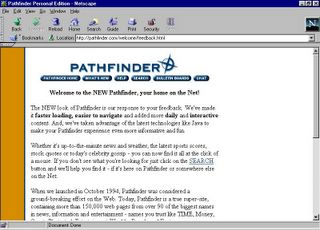


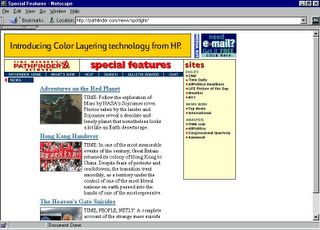
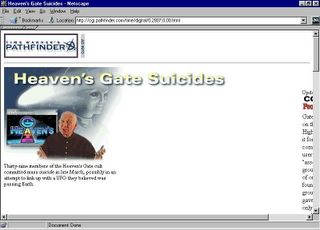
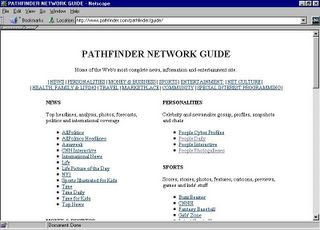
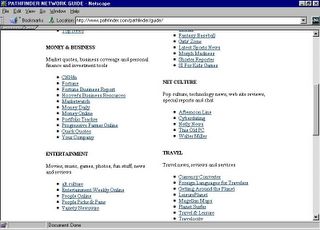
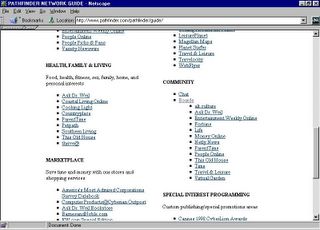
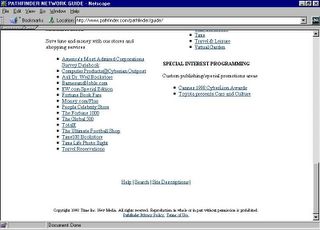
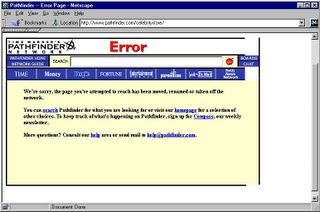
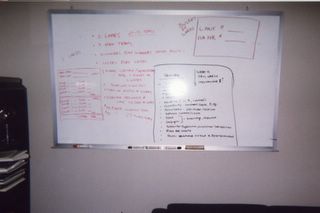

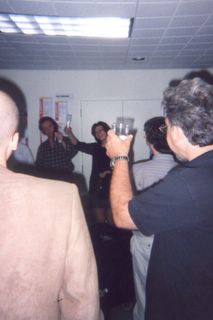
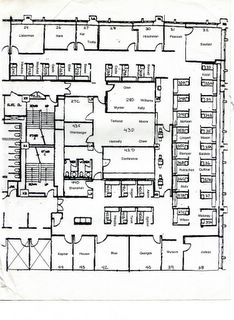
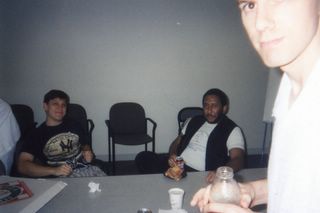
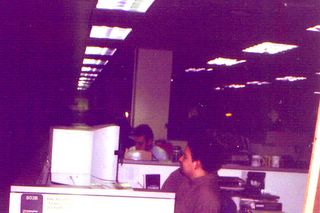
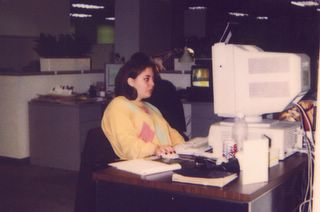
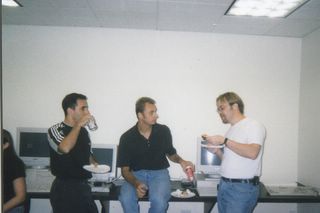
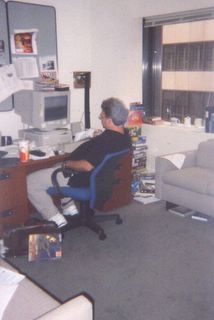
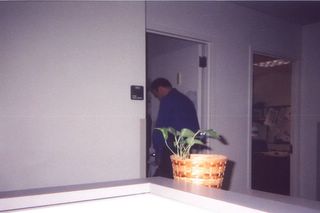
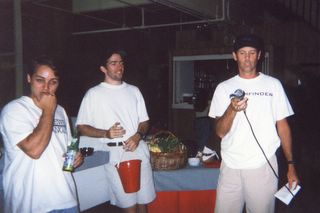
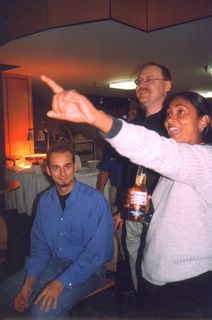

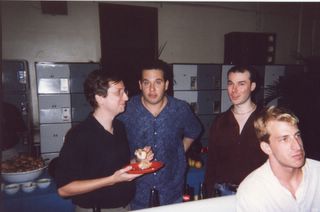
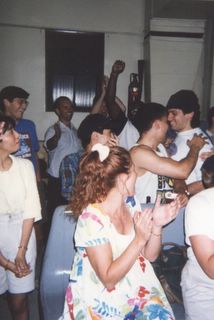
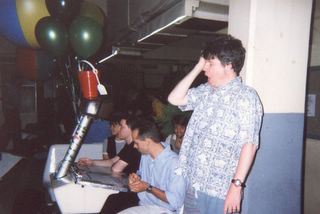
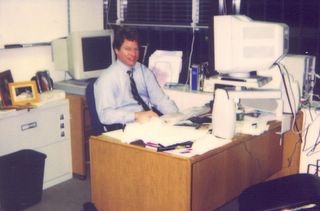
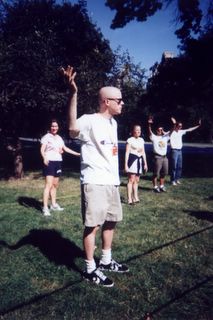
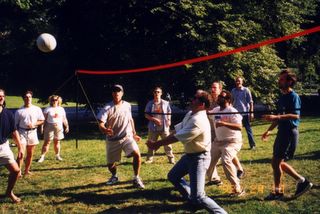
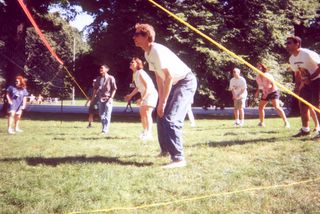
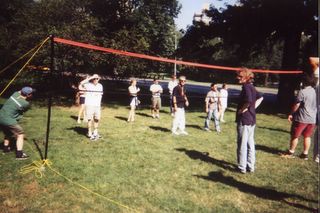
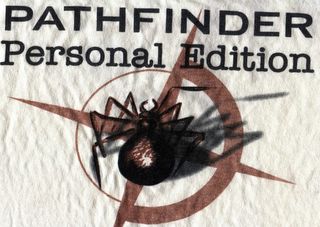
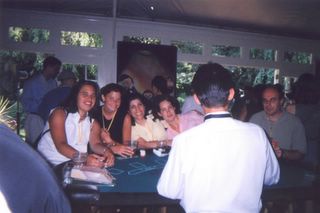
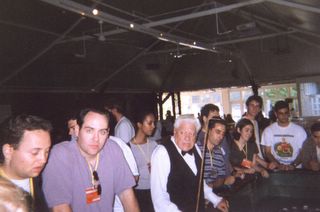
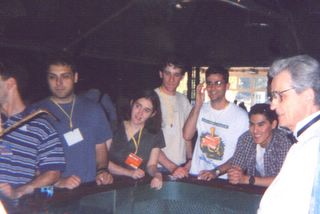
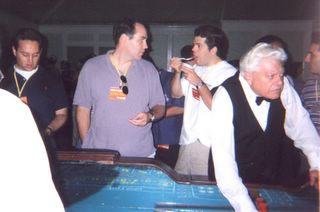

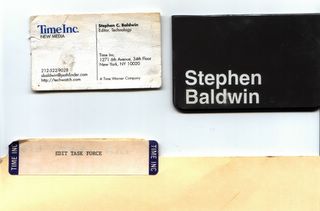
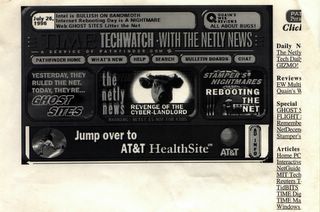
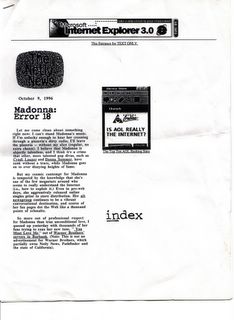
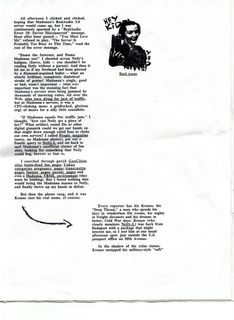
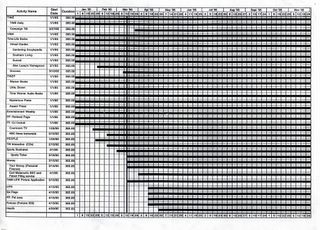
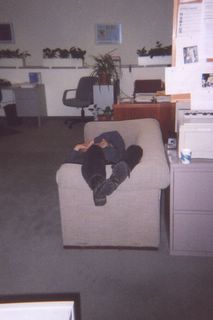
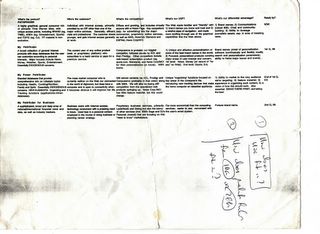
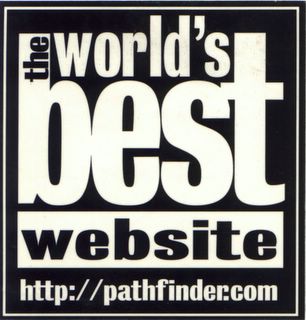
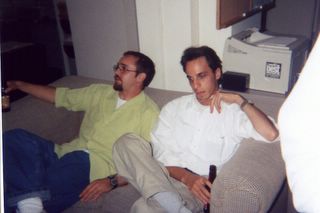
 Exhibit: A Short History of Pathfinder's Interactivity"
Exhibit: A Short History of Pathfinder's Interactivity" Exhibit: Pathfinder Group Volleyball
Exhibit: Pathfinder Group Volleyball

